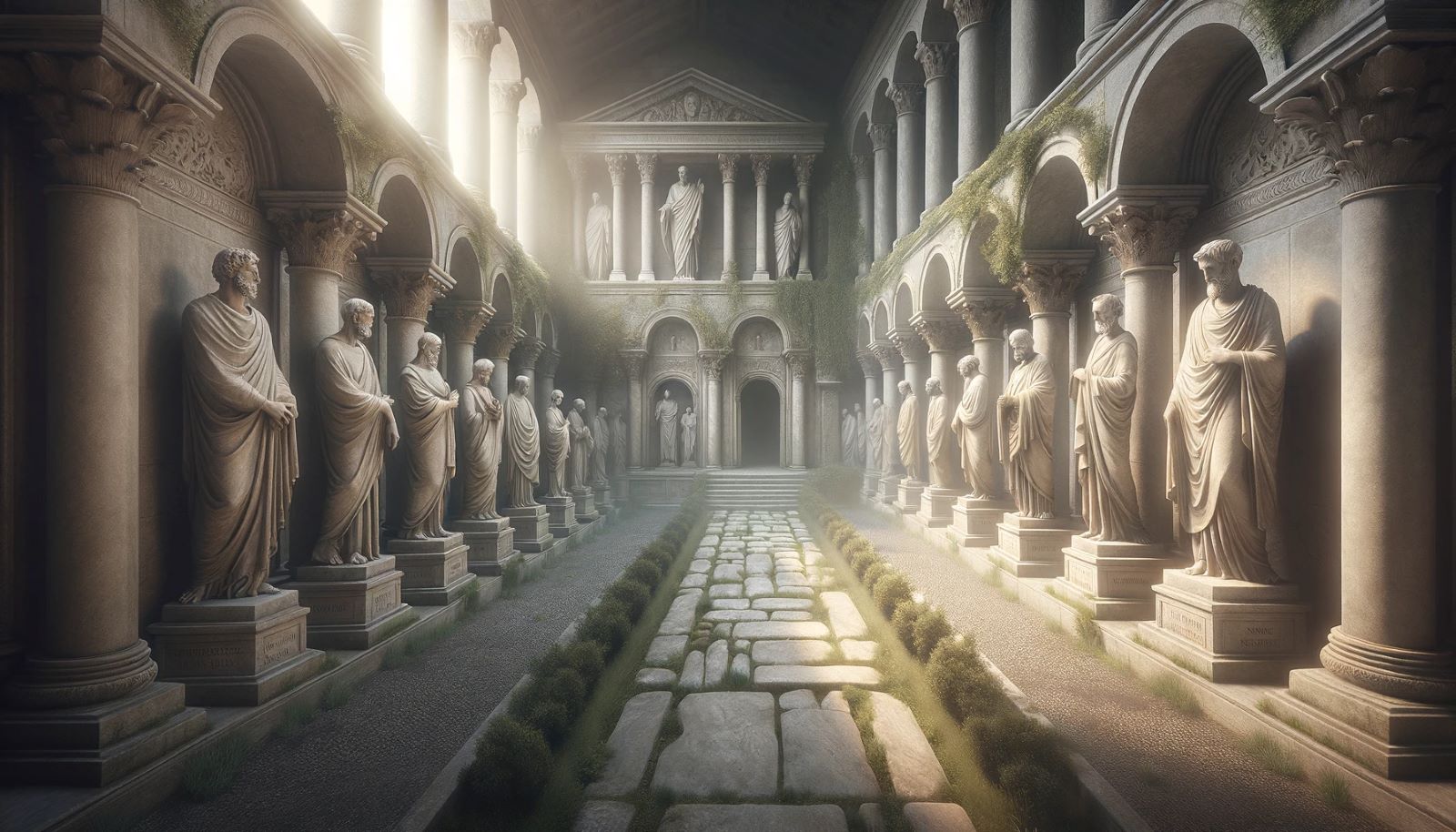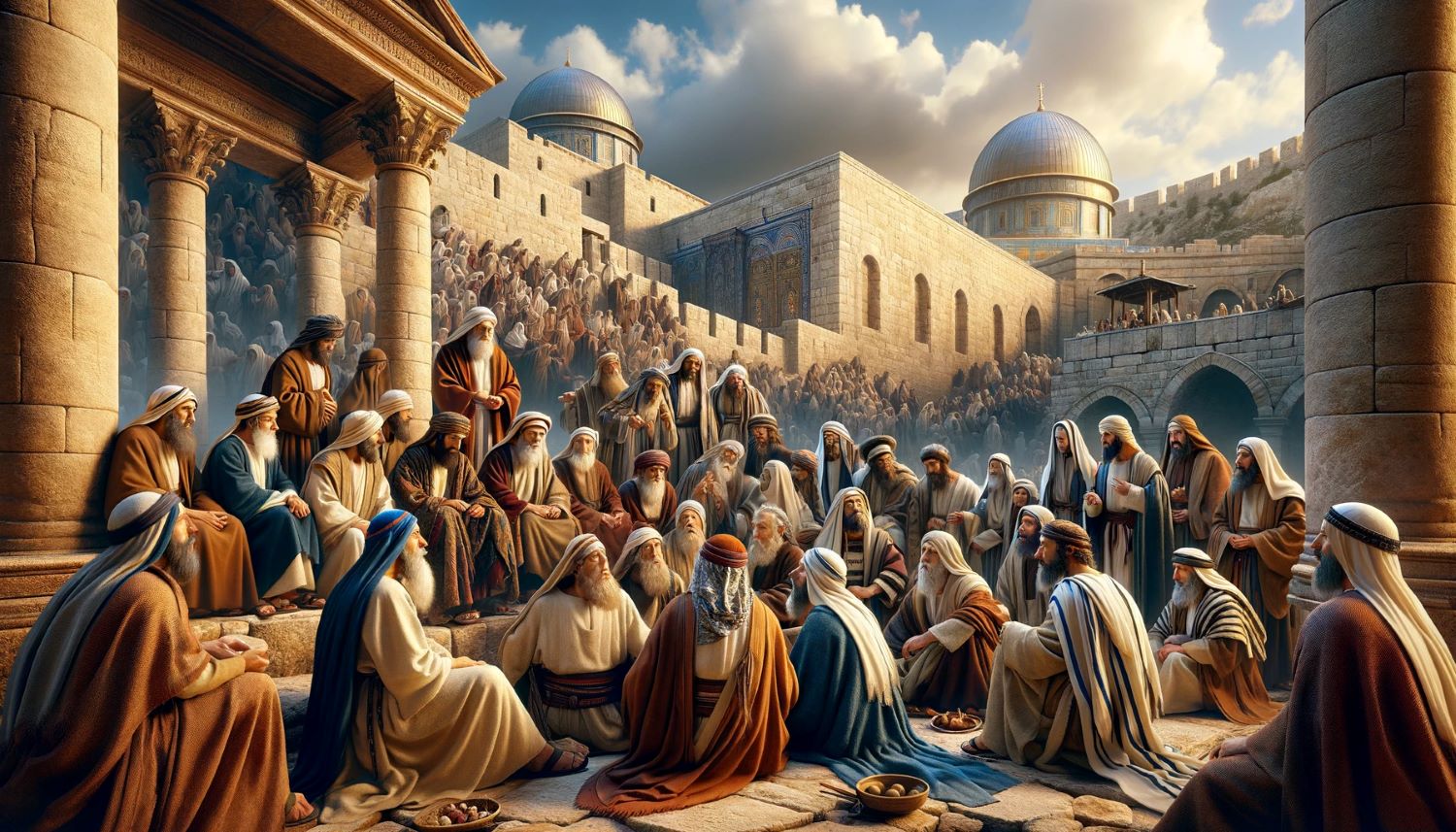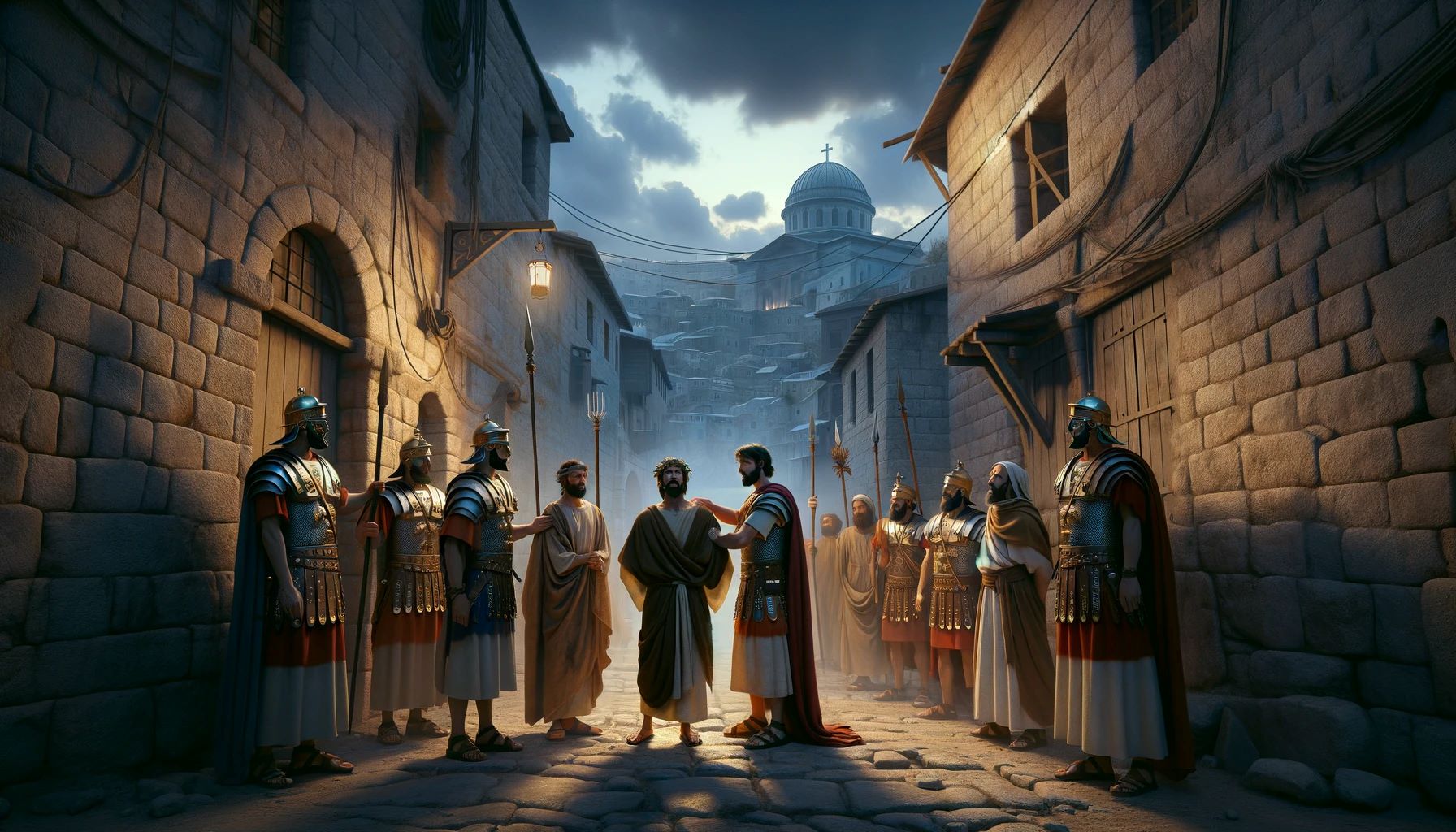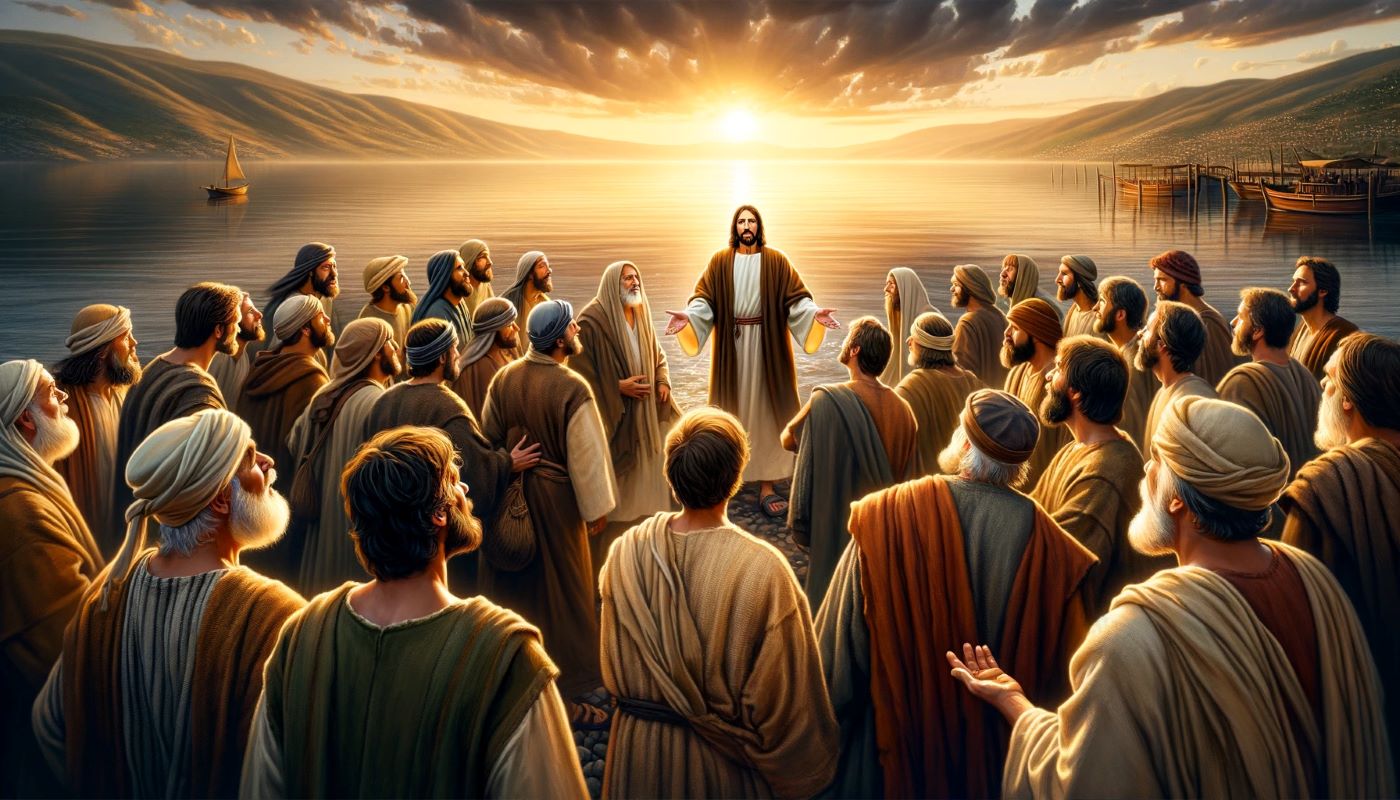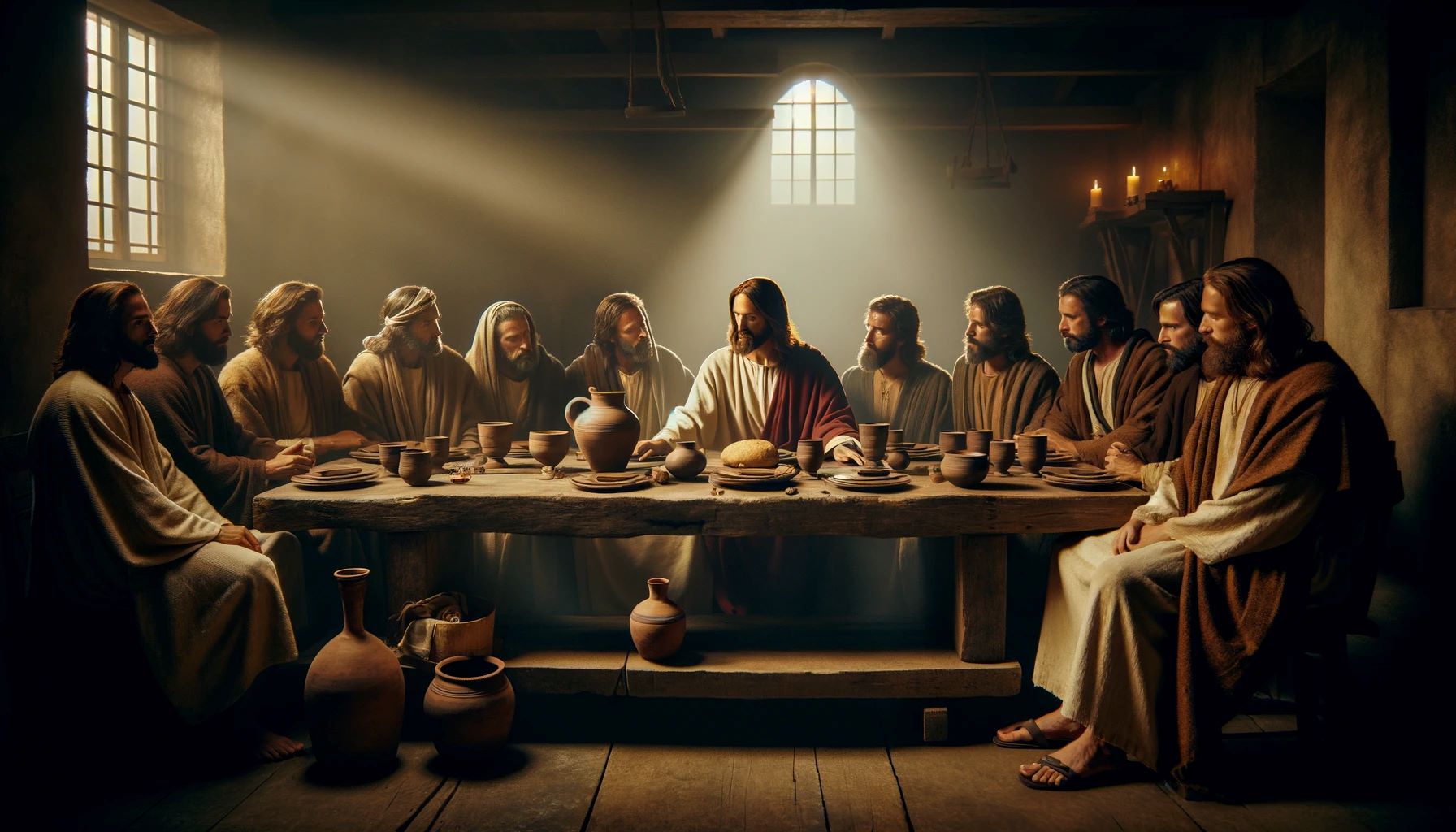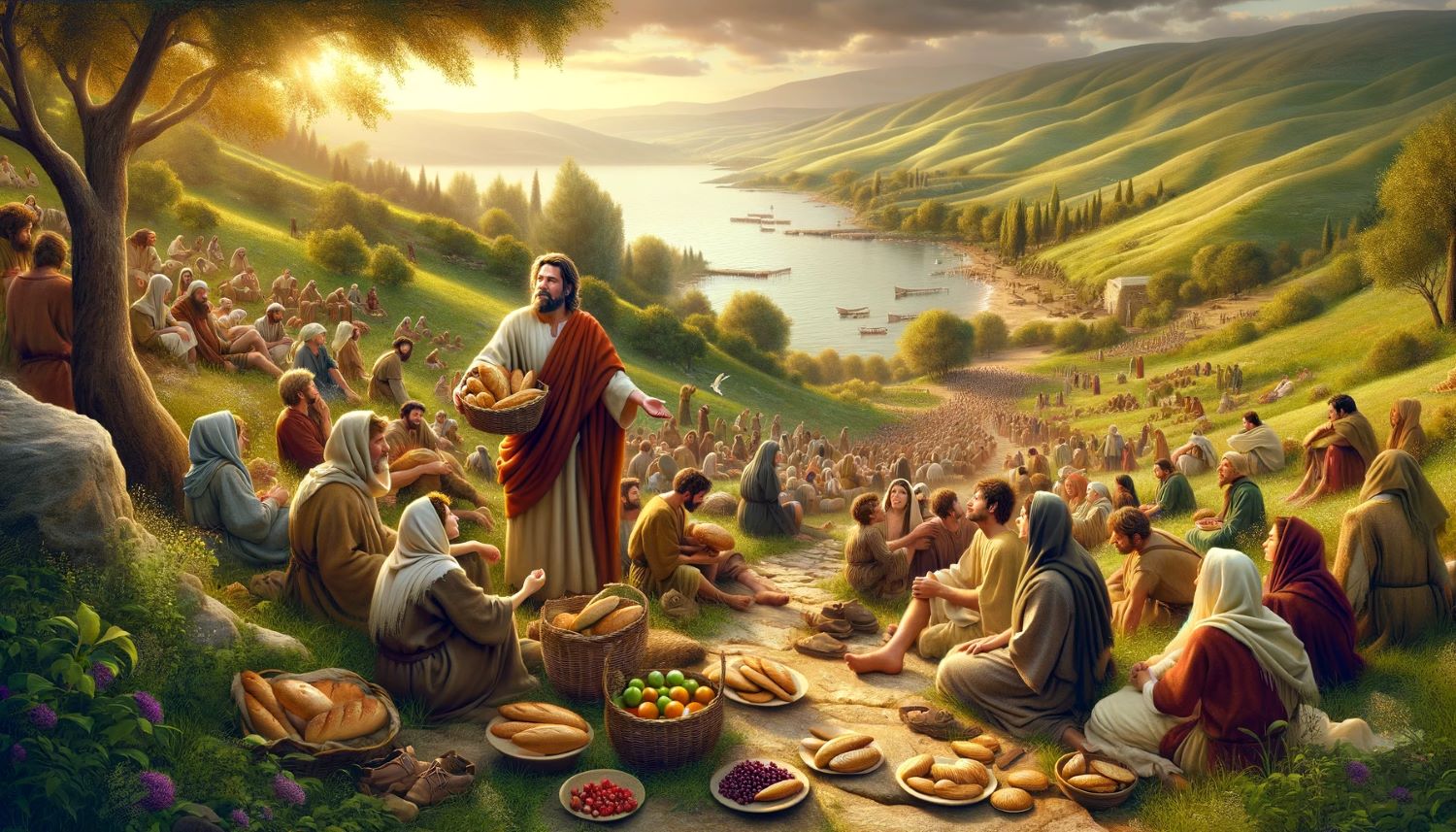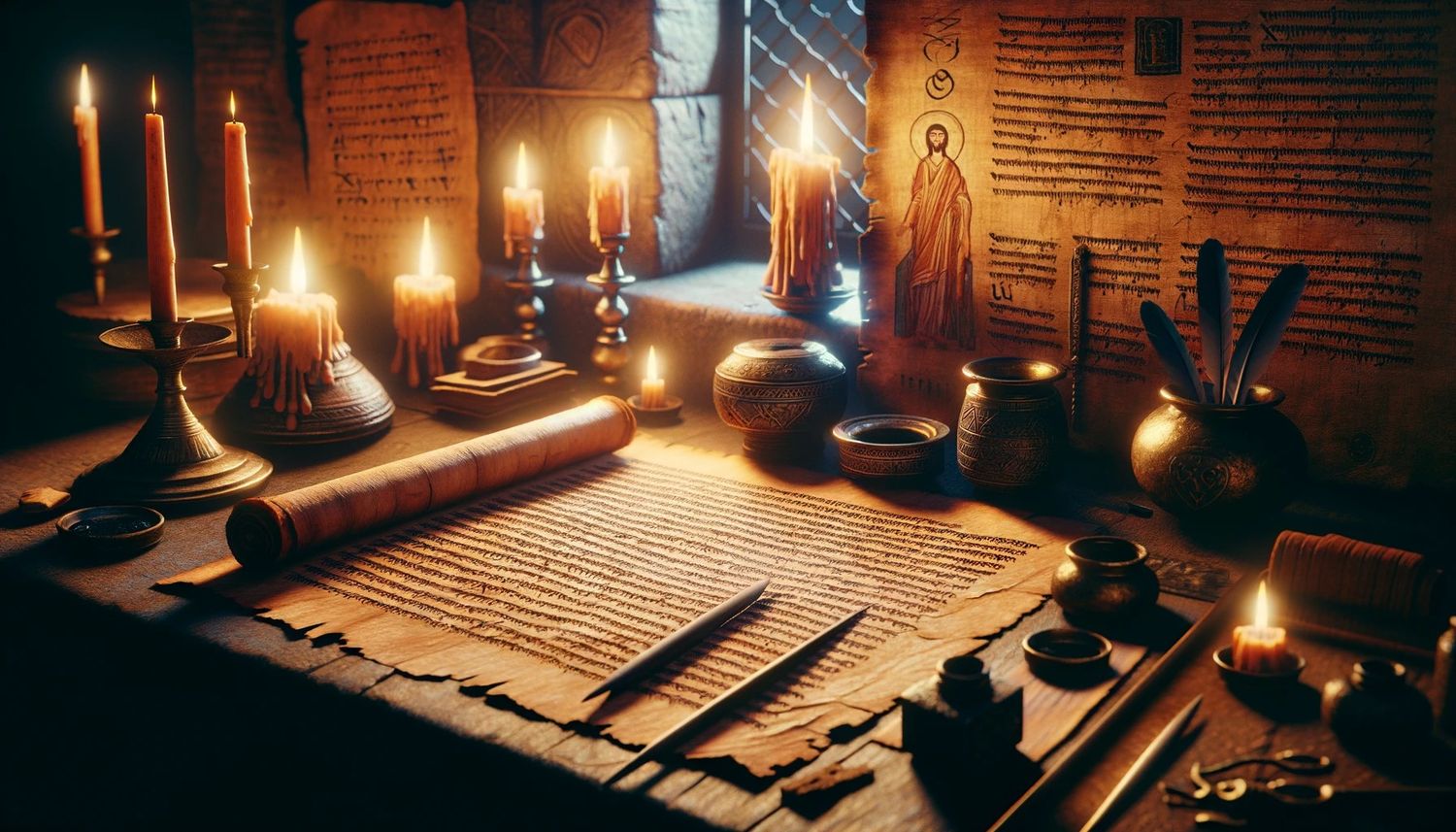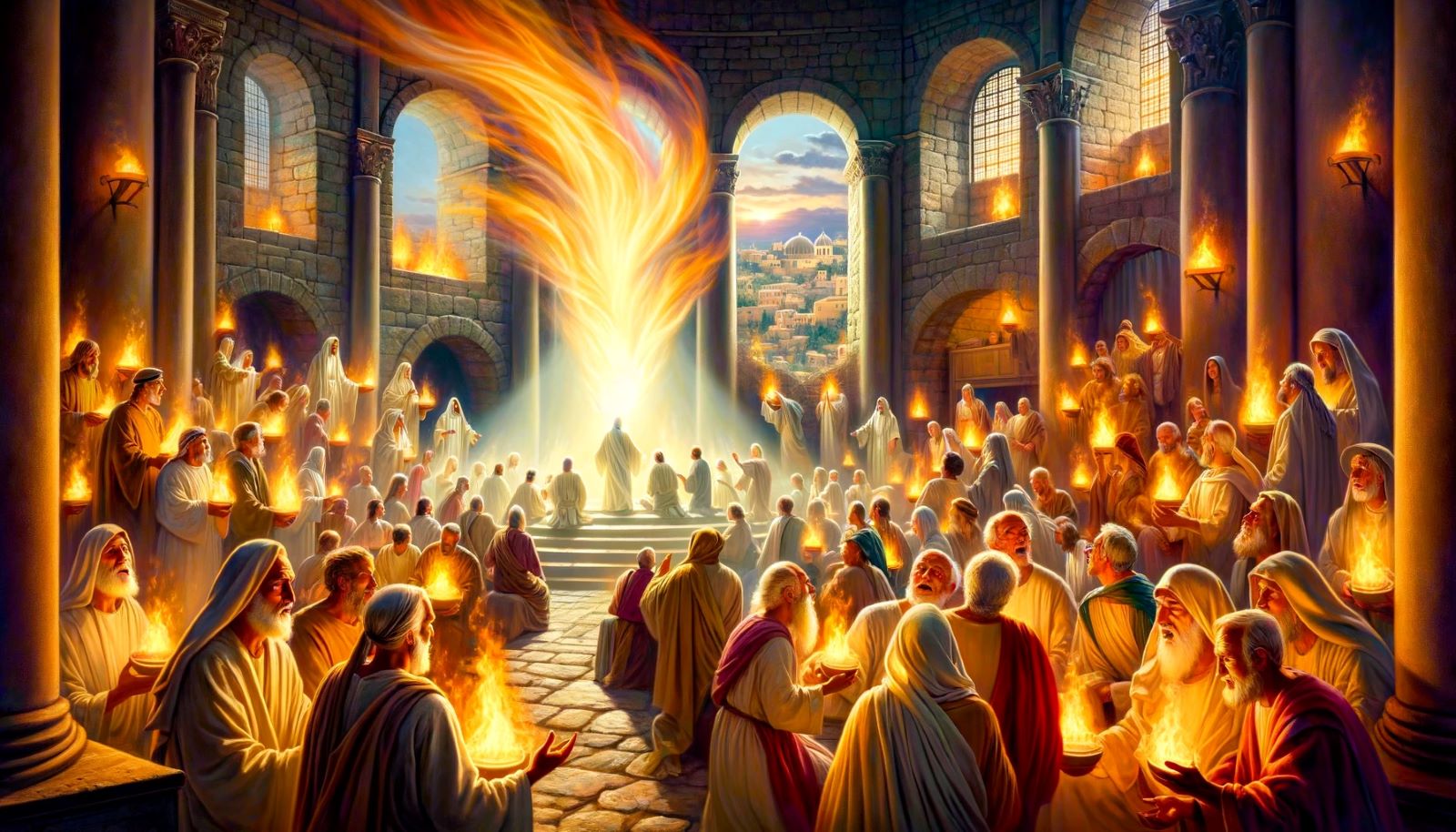Home>Bible Facts>How Many Apostles Are In Davincis Last Supper Picture
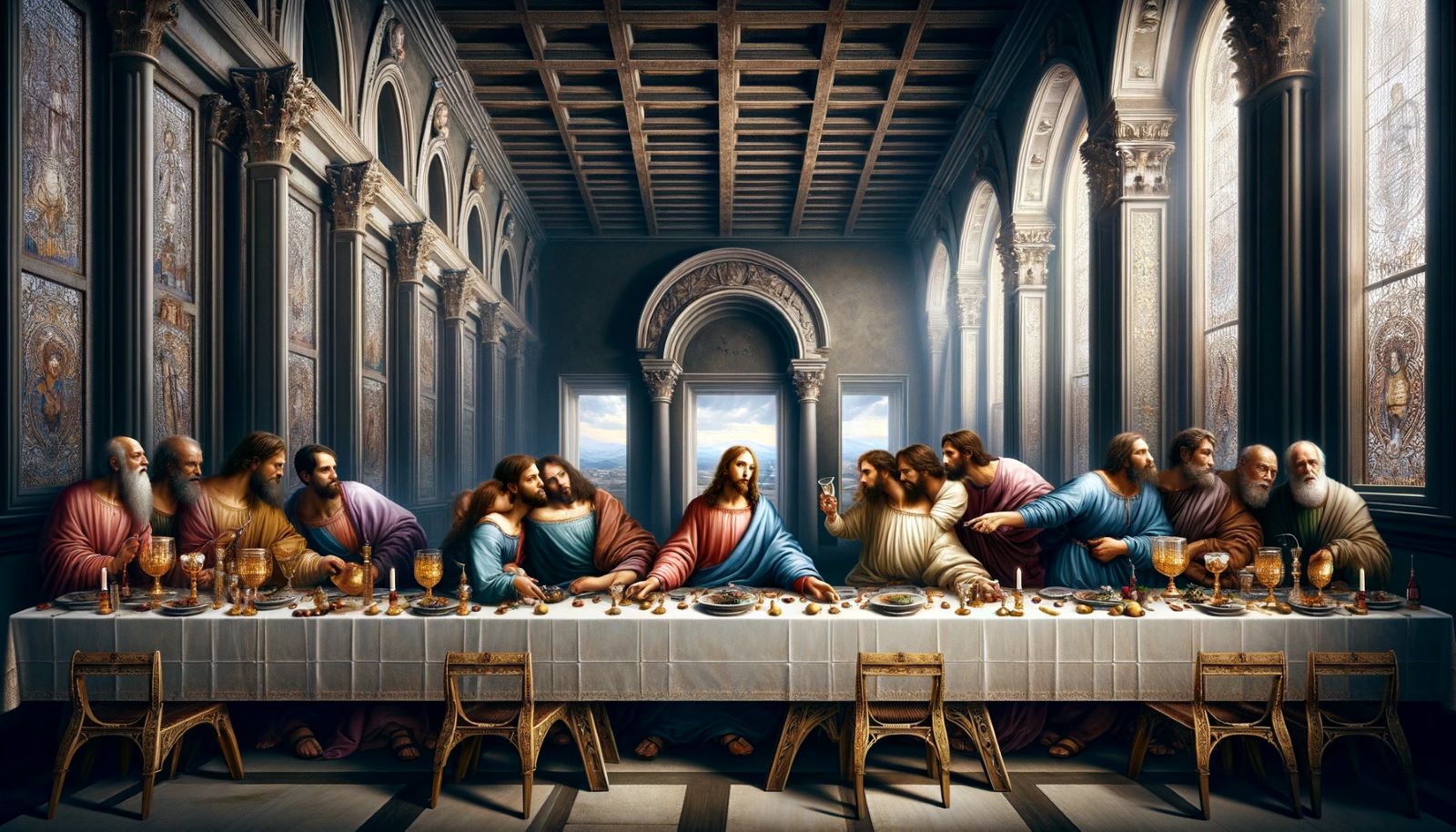

Bible Facts
How Many Apostles Are In Davincis Last Supper Picture
Published: February 19, 2024
Ericka Andersen, an editor at Christian.net, expertly merges digital strategy with content creation, focusing on faith and societal issues. Her communication skills enhance the platform's engaging narratives, fostering meaningful dialogue on belief's impact on society.
Discover fascinating Bible facts about Da Vinci's Last Supper painting and learn how many apostles are depicted in this iconic artwork. Explore the symbolism and history behind this masterpiece.
(Many of the links in this article redirect to a specific reviewed product. Your purchase of these products through affiliate links helps to generate commission for Christian.net, at no extra cost. Learn more)
Table of Contents
Introduction
The Last Supper, one of the most renowned works of art in the world, has captivated audiences for centuries. Painted by the legendary Leonardo da Vinci, this masterpiece depicts the poignant moment when Jesus reveals that one of his apostles will betray him. The painting's enduring allure lies not only in its artistic brilliance but also in the profound symbolism and historical significance it embodies.
As we delve into the enigmatic world of Da Vinci's Last Supper, we will explore the intricate details of this iconic painting and unravel the mysteries surrounding the apostles depicted within it. From the subtle nuances of their expressions to the hidden symbolism woven into the composition, each element of the painting offers a rich tapestry of meaning waiting to be discovered.
Join us on a journey through time and artistry as we uncover the secrets of Da Vinci's Last Supper and gain a deeper understanding of the apostles immortalized in this timeless masterpiece.
Read more: How Many James Were Apostles
The Last Supper Painting
Leonardo da Vinci's Last Supper stands as a testament to the artist's unparalleled skill and the enduring power of visual storytelling. This monumental fresco, measuring 15 feet by 29 feet, adorns the wall of the refectory at the Convent of Santa Maria delle Grazie in Milan, Italy. Created between 1495 and 1498, the painting captures the climactic moment of the biblical narrative when Jesus announces that one of his twelve apostles will betray him.
The composition is a masterful display of perspective and human emotion, with Jesus at the center, surrounded by his disciples. Da Vinci's meticulous attention to detail is evident in the individualized expressions and postures of each figure, conveying a range of emotions from shock and disbelief to sorrow and contemplation. The use of chiaroscuro, a technique that contrasts light and shadow, adds depth and drama to the scene, drawing the viewer into the intense atmosphere of the gathering.
The architectural elements in the painting, such as the coffered ceiling and the vanishing point behind Jesus, contribute to the overall sense of grandeur and solemnity. The symmetry and balance of the composition further emphasize the gravity of the moment, as the apostles react to Jesus' revelation with a mix of confusion and concern.
Da Vinci's innovative approach to capturing human expression and emotion is evident in the subtle gestures and interactions among the apostles, each conveying a distinct response to Jesus' announcement. From the incredulous gaze of Thomas to the anguished resignation of Judas, the painting invites viewers to immerse themselves in the complex web of emotions that permeate the scene.
The Last Supper transcends its biblical subject matter to become a timeless exploration of human psychology and the intricacies of interpersonal relationships. Through his unparalleled artistic vision, Leonardo da Vinci has immortalized this pivotal moment in history, inviting audiences to contemplate the universal themes of betrayal, loyalty, and sacrifice.
As we continue our exploration of Da Vinci's Last Supper, we will delve deeper into the identities and significance of the apostles depicted in this iconic painting, unraveling the layers of symbolism and interpretation that have fascinated scholars and art enthusiasts for centuries.
The Apostles in Da Vinci's Last Supper
The portrayal of the twelve apostles in Leonardo da Vinci's Last Supper is a captivating study in human expression and symbolism. Each figure embodies a distinct personality and reaction to Jesus' revelation, contributing to the intricate narrative woven into the painting. As we scrutinize the apostles' depictions, we unravel the layers of meaning and significance that Da Vinci ingeniously embedded within the composition.
-
Peter: Positioned to the left of Jesus, Peter's agitated posture and outstretched hands convey disbelief and defiance. His animated interaction with John underscores his fervent response to Jesus' announcement.
-
John: Resting against Jesus, John's youthful countenance and serene demeanor stand in stark contrast to the turmoil surrounding him. His proximity to Jesus symbolizes the beloved disciple's intimate connection with the Messiah.
-
Andrew: Positioned next to Peter, Andrew's gesture of raising his hands in astonishment captures the emotional tumult that permeates the gathering. His expression mirrors the collective disbelief shared by the apostles.
-
Judas Iscariot: Positioned on the opposite side of the table, Judas' isolated stance and clenched bag of silver allude to his impending betrayal. His shadowed profile and downturned gaze foreshadow the tragic role he is destined to play.
-
Thomas: Positioned to the right of James the Greater, Thomas' incredulous gesture and furrowed brow epitomize skepticism and disbelief. His probing gaze reflects the human struggle to comprehend the gravity of Jesus' revelation.
-
James the Greater: Positioned next to Thomas, James' animated conversation with Simon the Zealot captures the fervent exchange of emotions and opinions among the apostles. His expressive gestures convey a sense of urgency and concern.
-
Philip: Positioned between Judas and Matthew, Philip's open-handed gesture and quizzical expression reflect his perplexity in response to Jesus' proclamation. His contemplative demeanor adds depth to the collective emotional response of the apostles.
-
Bartholomew: Positioned next to Philip, Bartholomew's introspective gaze and composed posture suggest a contemplative introspection, as he grapples with the weight of Jesus' words.
-
Matthew: Positioned to the right of Philip, Matthew's startled reaction and outstretched arms mirror the collective astonishment that reverberates through the group. His dynamic posture adds a sense of movement and urgency to the scene.
-
James the Lesser: Positioned next to Matthew, James' earnest conversation with Simon the Zealot conveys a shared sense of consternation and disbelief. His animated gestures contribute to the palpable tension in the room.
-
Simon the Zealot: Positioned between James the Lesser and Thaddeus, Simon's impassioned dialogue with his fellow apostles underscores the fervent exchange of emotions and opinions that permeates the gathering. His animated gestures convey a sense of urgency and concern.
-
Thaddeus: Positioned to the right of Simon the Zealot, Thaddeus' contemplative gaze and composed demeanor reflect a profound introspection as he grapples with the weight of Jesus' revelation.
The apostles' diverse reactions and interactions in Da Vinci's Last Supper encapsulate the spectrum of human emotions and responses to pivotal moments in history. Through their individualized portrayals, Da Vinci invites us to contemplate the timeless themes of faith, doubt, loyalty, and betrayal that resonate throughout the ages.
Theories and Interpretations
The enigmatic allure of Leonardo da Vinci's Last Supper has sparked a myriad of theories and interpretations, captivating scholars, art historians, and enthusiasts alike. The painting's rich symbolism and nuanced portrayal of the apostles have given rise to a tapestry of conjectures and analyses, each offering a unique perspective on the timeless masterpiece.
One prevalent theory revolves around the symbolic significance of the apostles' gestures and interactions. Scholars have meticulously dissected the subtle nuances of each figure, attributing specific meanings to their postures and expressions. From Peter's defiant stance to John's tranquil proximity to Jesus, every detail has been scrutinized for its potential allegorical connotations, adding layers of depth to the painting's narrative.
Another compelling interpretation delves into the psychological dynamics at play within the composition. The apostles' varied reactions to Jesus' revelation have been examined through the lens of human emotion and interpersonal relationships. The complex interplay of disbelief, concern, and introspection among the figures invites speculation about the underlying motivations and inner turmoil experienced by each apostle in response to the pivotal moment unfolding before them.
Furthermore, religious and theological perspectives offer profound insights into the spiritual dimensions of the painting. The apostles' responses to Jesus' announcement have been interpreted as emblematic of the broader human experience of grappling with faith, doubt, and moral dilemmas. Their individual struggles mirror the universal challenges faced by humanity, transcending the specific biblical narrative to resonate with audiences on a deeply personal and existential level.
Additionally, historical and contextual analyses shed light on the cultural and political milieu in which Da Vinci created his masterpiece. The apostles' depictions have been scrutinized for potential allusions to contemporary events, societal norms, and religious symbolism prevalent during the Renaissance era. Such interpretations provide a window into the broader cultural tapestry that informed Da Vinci's artistic choices and imbued the painting with layers of contextual significance.
As the myriad theories and interpretations converge, Da Vinci's Last Supper continues to elude definitive categorization, inviting ongoing exploration and contemplation. The painting's enduring enigma serves as a testament to its timeless relevance and the boundless depths of meaning it holds for each generation of viewers.
Theories and interpretations surrounding Da Vinci's Last Supper exemplify the enduring fascination and interpretive richness of this iconic work of art. From symbolic allegories to psychological insights, the diverse lenses through which the painting is viewed underscore its profound impact on the realms of art, history, and human consciousness.
Conclusion
In conclusion, Leonardo da Vinci's Last Supper transcends its status as a religious masterpiece to become a timeless exploration of human emotion, symbolism, and narrative complexity. The apostles depicted in the painting serve as conduits for a myriad of interpretations, inviting viewers to contemplate the universal themes of faith, doubt, and the complexities of human nature.
Through Da Vinci's masterful portrayal, each apostle emerges as a distinct persona, encapsulating a range of emotions and responses to Jesus' revelation. From Peter's defiant disbelief to John's serene proximity to Jesus, the apostles embody a spectrum of human experiences, inviting viewers to empathize with their individual struggles and introspections.
Theories and interpretations surrounding the Last Supper further enrich the painting's enigmatic allure, offering insights into the symbolic, psychological, and historical dimensions of the artwork. Whether scrutinized through the lens of allegorical symbolism, psychological dynamics, religious significance, or historical context, the apostles' depictions continue to captivate scholars and art enthusiasts, perpetuating the enduring legacy of Da Vinci's masterpiece.
As we navigate the intricate tapestry of interpretations, one thing remains certain: the Last Supper transcends its biblical narrative to resonate with audiences across cultures and generations. The apostles' timeless portrayal serves as a mirror to the human condition, inviting introspection and contemplation of the profound themes that underpin the painting's enduring relevance.
In essence, Da Vinci's Last Supper, with its evocative portrayal of the apostles, stands as a testament to the enduring power of art to transcend time and space, inviting viewers to embark on a profound journey of introspection and interpretation. The apostles immortalized in this iconic masterpiece continue to beckon audiences into a world of timeless significance, where the complexities of human emotion and the enduring quest for meaning converge in a symphony of visual storytelling.
As we bid farewell to the apostles of Da Vinci's Last Supper, their indelible presence in the annals of art history serves as a reminder of the enduring impact of this timeless masterpiece, inviting us to unravel its mysteries and contemplate the profound truths it continues to unveil.
The Last Supper endures as a testament to the enduring power of art to transcend time and space, inviting viewers to embark on a profound journey of introspection and interpretation.
